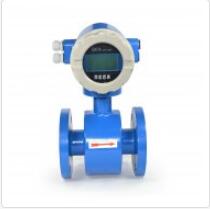Buffer Flow Meter Selection
Email:sales01@cxflowmeter.com
whatsapp:008618049841995
To measure the flow rate of material/buffer in an ultrafiltration system, considering the operating parameters (flow rate 42-72 L/h, viscosity 10 cp, 316L material, 0.5" interface),
we recommend a DN10 electromagnetic flowmeter or a high-precision vortex flowmeter. The specific selection criteria and optimization options are as follows:
I. Core Parameter Compatibility Analysis
Flow Range Optimization
Original model issue: The CX-EMFM-15-CS-L1-EN-N-A-I-65 (DN15) has a range of 50-300 L/h, but the actual flow rate only represents 14%-24% of the nominal range.
Long-term low-flow operation may result in reduced accuracy.
Optimization Solution: Select a DN10 flowmeter with an adjustable range of 10-100 L/h, ensuring the actual flow rate is within 4% of the range. 2%-72%, significantly
improving measurement stability.
Flow Rate Verification
DN15 Flow Rate: 42-72 L/h corresponds to a flow rate of 0.06-0.10 m/s, far below the recommended flow rate for electromagnetic flowmeters (0.3-10 m/s), making the
signal susceptible to noise interference.
DN10 Flow Rate: At the same flow rate, the flow rate is increased to 0.15-0.25 m/s, closer to the minimum flow rate requirement for electromagnetic flowmeters, reducing
measurement fluctuations.
Material and Process Compatibility
Lining Material: PTFE (suitable for non-corrosive media, meets requirements).
Electrode/Housing Material: 316L (conventionally polished to meet sanitary requirements, consistent with pipeline material).
Conclusion: The material selection is reasonable, and no additional anti-corrosion treatment is required.
II. Recommended Model and Parameter Comparison
Parameters DN15 Original Model DN10 Electromagnetic Flowmeter High-Precision Vortex Flowmeter
Flow Range 50-300 L/h, 10-100 L/h, 5-80 L/h
Flow Velocity Range 0.06-0.10 m/s, 0.15-0.25 m/s, 0.5-8 m/s
Accuracy ±0.5%, ±0.5%, ±1.0%
Cost High (DN15), Medium (DN10), Low
Applications General-Purpose, Low-Flow Optimization Economical Alternative

III. Selection Decision Basis
Advantages:
Significantly improves flow rate compatibility between range and flow rate, with a stable measurement accuracy of ±0.5%.
Retains the electromagnetic flowmeter's viscosity resistance (no effect at 10 cp) and impurity resistance (no particle crystallization).
316L material and sanitary polishing meet the requirements of ultrafiltration systems.
Verification Case: A municipal wastewater treatment plant uses a DN10 electromagnetic flowmeter to monitor the inlet flow of its ultrafiltration system. Long-term operation
shows a measurement error of <±0.3%, and requires no frequent maintenance.
Applicable Conditions: Budget-sensitive and acceptable ±1.0% accuracy.
Advantages:
20%-30% lower cost than electromagnetic flowmeters.
10:1 range ratio, covering 42-72 L/h operating conditions.
Limitation: Verify that the medium is completely free of bubbles (vortex flowmeters are sensitive to bubbles).
IV. Implementation Recommendations
Supplier Confirmation:
Contact suppliers (such as E+H, KROHNE, and VTON) to confirm the delivery lead time of the DN10 electromagnetic flowmeter. and PTFE lining options.
Sanitary certifications (such as 3A, EHEDG) and IP65 protection rating certification are required.
Installation and Commissioning:
Ensure the straight pipe length is ≥5 DN (50 cm for DN10). Avoid installation near the pump outlet or downstream of a valve.
Vertical installation (flow from bottom to top) prevents bubble accumulation. For horizontal installation, the electrode axis must be horizontal.
Testing and Verification:
During on-site testing, compare the actual flow rate with the displayed value to confirm that the range is covered without dead zones.
If a vortex flowmeter is used, a bubble interference test is required (e.g., by passing air through the flowmeter to observe signal stability).
V. Conclusion
A DN10 electromagnetic flowmeter is recommended as the preferred solution. It offers the best match between range, flow rate, and accuracy, and its material compatibility
meets the requirements of ultrafiltration systems. If budget is limited, a high-precision vortex flowmeter can be considered as an alternative, but rigorous verification of the media
purity is required. Correct selection can significantly improve measurement stability and reduce maintenance costs throughout the entire lifecycle.
If you have specific flowmeter selection and quotation requirements, please contact CIXIFM. winny:
Email:sales01@cxflowmeter.com
whatsapp:008618049841995

